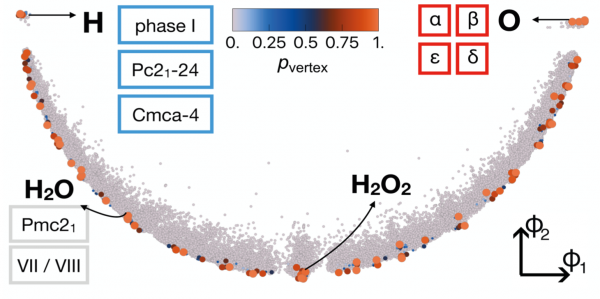New Convex Hull Framework Provides More Efficient Means of Identifying Synthesizable Materials Candidates
by Carey Sargent, EPFL, NCCR MARVEL
The main goal of computational materials science is to autonomously predict structures with desirable properties and to design technologically relevant materials. While it is relatively easy to generate large numbers of potential candidates, for instance by computational searches or elemental substitution, identifying synthesizable compounds is like searching for a needle in a haystack.
Conventionally, screening for such materials has been based on a method, known as convex hull construction, which identifies structures that are stabilized by a particular thermodynamic constraint chosen based on prior experimental evidence or intuition—pressure, for instance.

In the paper, published in Physical Review Materials, the researchers introduced a generalized convex hull framework that relies on data-driven coordinates instead of those chosen by experimental evidence or intuition. This allows the framework to represent the full structural diversity of the candidate compounds in an unbiased way. Having identified candidate structures with a high potential for synthesis, one can then determine the relation between the data-driven coordinates and experimentally-realizable parameters (pressure, electric field, chemical doping, …), therefore providing a much-needed starting point for determining viable synthetic pathways.
The probabilistic construction of the framework addresses the inevitable uncertainty in input structure data and provides at negligible cost the energy relative to the generalized convex hull framework, a far better measure of structural stability. This can be used instead of bare energies in diverse applications such as experimental crystal structure determination protocols or as the fitness function driving structure searches in situ.
The full paper can be found here.
References:
A. Anelli, E.A. Engel, C.J. Pickard, M. Ceriotti, Generalized convex hull construction for materials discovery, Phys. Rev. Materials 2, 103804 (2018)
Low-volume newsletters, targeted to the scientific and industrial communities.
Subscribe to our newsletter